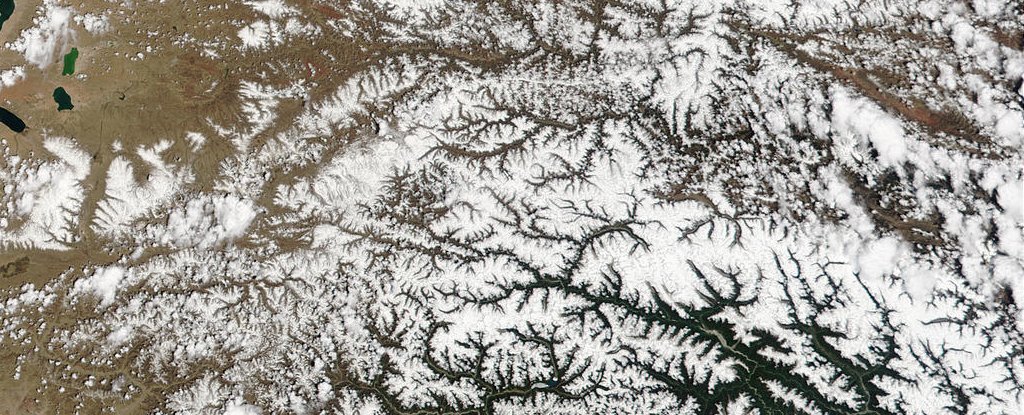Products You May Like
Living as a microbe on the Tibetan Plateau isn’t easy. Frigid temperatures, high levels of solar radiation, not a lot to eat, and you’d regularly get frozen and then thawed depending on the time of year.
So, it’s a bit of a surprise that in these ‘extreme environmental conditions’ scientists have discovered 968 species featuring a hugely diverse range of microbes. The finding comes courtesy of the first dedicated genome catalog of the glacier ecosystem.
“The surfaces of glaciers support a diverse array of life, including bacteria, algae, archaea, fungi, and other microeukaryotes. Microorganisms have demonstrated the ability to adapt to these extreme conditions and contribute to vital ecological processes,” writes the team in their new paper.
“Glacier ice can also act as a record of microorganisms from the past, with ancient (more than 10,000 years old) airborne microorganisms being successfully revived. Therefore, the glacial microbiome also constitutes an invaluable chronology of microbial life on our planet.”
The researchers honed in on one specific group of glaciers – the Tibetan Plateau. This 2.5 million square kilometer region is an important water source for the surrounding areas in Asia and has been particularly affected by climate change, with over 80 percent of glaciers having started to retreat.
Not only is it important for us to know which microbes are up there (just in case they could be a problem for humans and the ecosystem as the ice melts), but if we don’t note what species are currently there, climate change might soon make them lost to history.
“Here we present the first, to our knowledge, dedicated genome and gene catalog for glacier ecosystems, comprising 3,241 genomes and metagenome-assembled genomes and 25 million non-redundant proteins from 85 Tibetan glacier metagenomes and 883 cultivated isolates,” the team, led by Lanzhou University ecologist Yongqin Liu, writes in their paper.
The researchers undertook a mammoth effort, sampling snow, ice, and dust from 21 Tibetan glaciers between 2016 and 2020. They used metagenomic methods on the samples to collect all of the genetic material present; they also cultured some of the microbes in a lab to find out more about them and to retrieve a higher proportion of their genome.
Excitingly, 82 percent of the genomes were novel species. A whopping 11 percent of species were found only in one glacier, while 10 percent were located in almost all the glaciers studied.
The project has become what the researchers are calling the ‘Tibetan Glacier Genome and Gene’ (TG2G) catalog, and hopefully this will be of use for researchers in the future, with new additions as more species are found.
“The TG2G catalog offers a database and a platform for archiving, analysis and comparison of glacier microbiomes at the genome and gene levels. It is particularly timely as the glacier ecosystem is threatened by global warming, and glaciers are retreating at an unprecedented rate,” the team writes.
“We envisage that the catalog will form the basis of a comprehensive global repository for glacial microbiome data.”
The research has been published in Nature Biotechnology.
